Nexus 7 (2013) - Mini Review
by Brian Klug on July 27, 2013 12:54 AM EST- Posted in
- Tablets
- Snapdragon
- Qualcomm
- Android
- Mobile
- APQ8064
- Nexus 7
- Android 4.3
Last year the Nexus 7 debuted with a Tegra 3 SoC, which for reminder consisted of a 4+1 architecture of ARM Cortex A9 CPUs, with the 4 A9s built on 40nm G, and the +1 “shadow core” A9 built on 40nm LP (TSMC’s 40 LPG process), accompanied by ULP GeForce GPU with 12 cores running at a max GPU clock of 416 MHz. The exact SoC was NVIDIA’s Tegra 3 T30L, which could run one A9 at up to 1.3 GHz and all A9s at up to 1.2 GHz.
Rather than the relatively logical upgrade path of going to NVIDIA’s Tegra 4 SoC (I’ve heard all manner of speculation about what happened there), the new Nexus 7 switches to Qualcomm’s APQ8064–1AA, a version with 4 Krait 300 CPU cores (yes, Krait 300, not 200) running at up to 1.5 GHz and Adreno 320 graphics. Rather than use a PoP and LPDDR2, this specific APQ8064 variant goes to PCDDR3L–1600 MHz instead, including 4, 4Gb discrete 1.35V SK-hynix DRAM devices off to the side (more on the opposite side of the PCB) adding up to 2 GB of RAM. Qualcomm's Snapdragon S4 Pro and Snapdragon 600 branding gets confused here, although Qualcomm is calling the APQ8064 inside the Nexus 7 (2013) S4 Pro, it's more like an underclocked or lower binned Snapdragon 600.
At this point APQ8064 is probably the most well understood SoC in recent memory (so much so that I’m pining for devices to include something different just from an academic perspective) so I’ll spare the very verbal discussion about its performance.
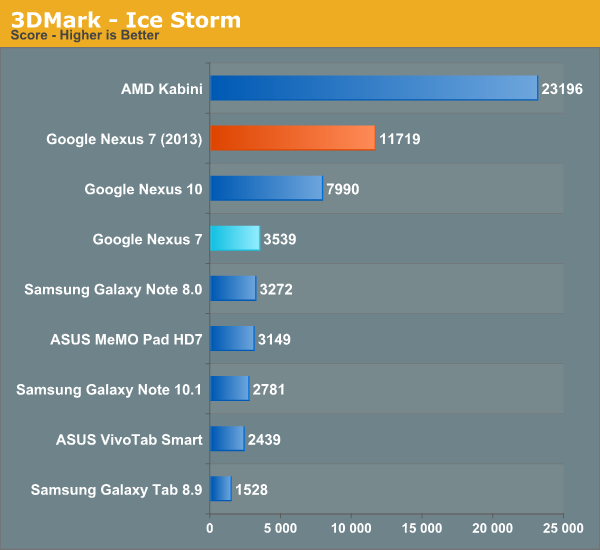



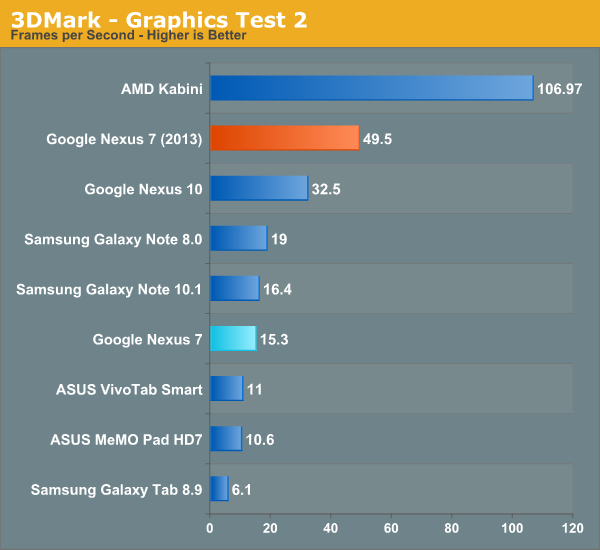
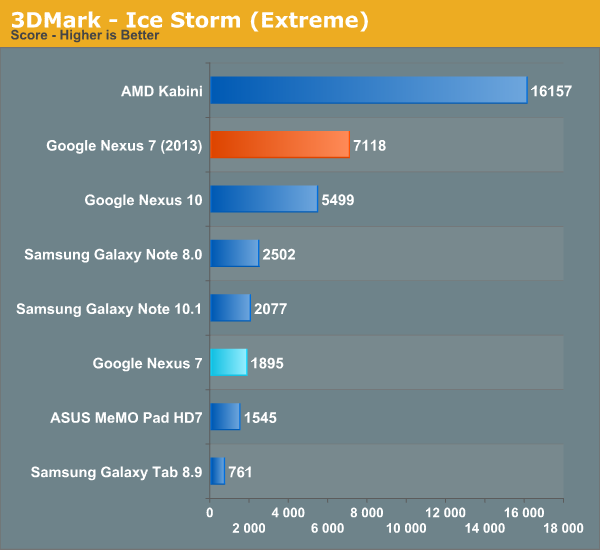

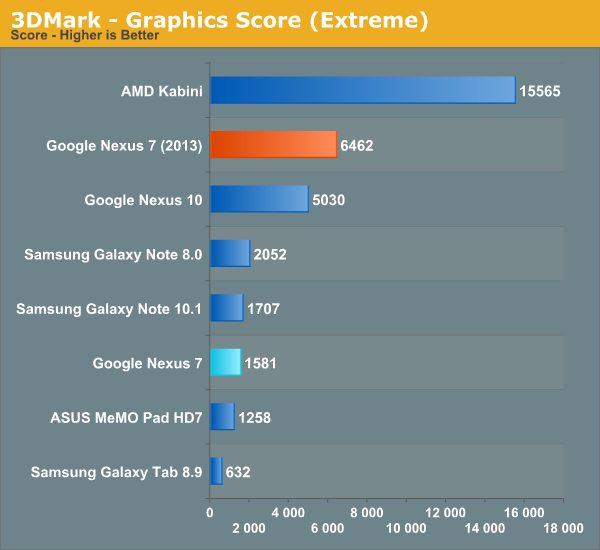

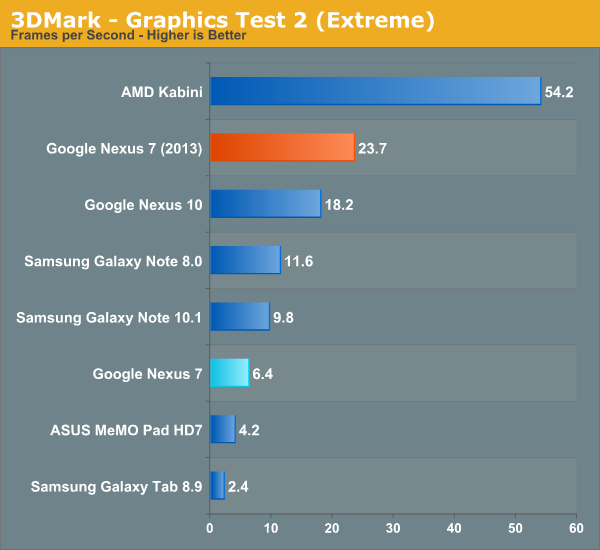


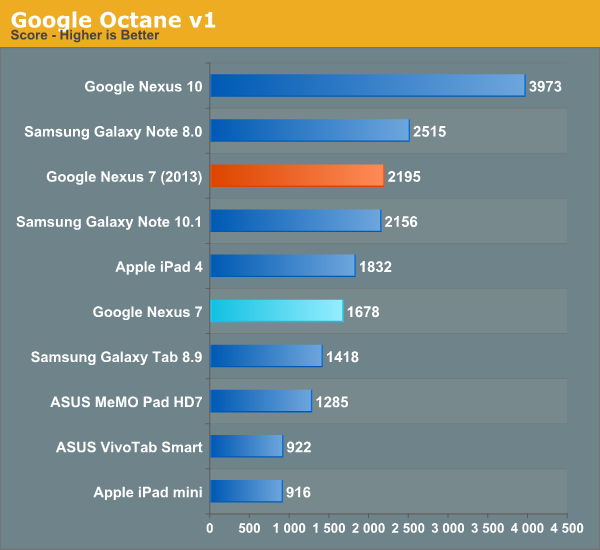
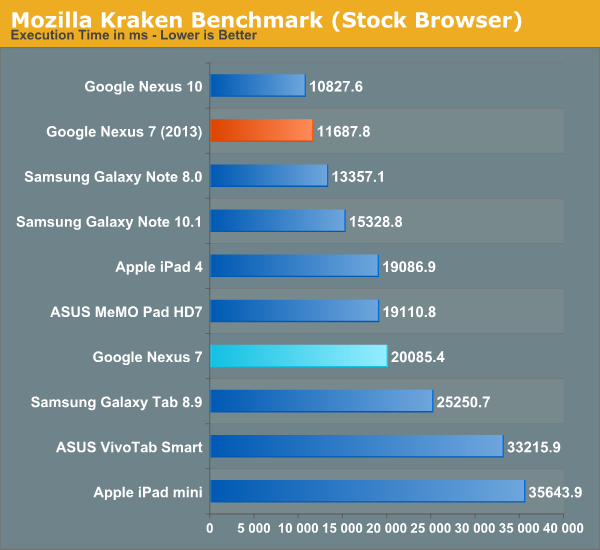
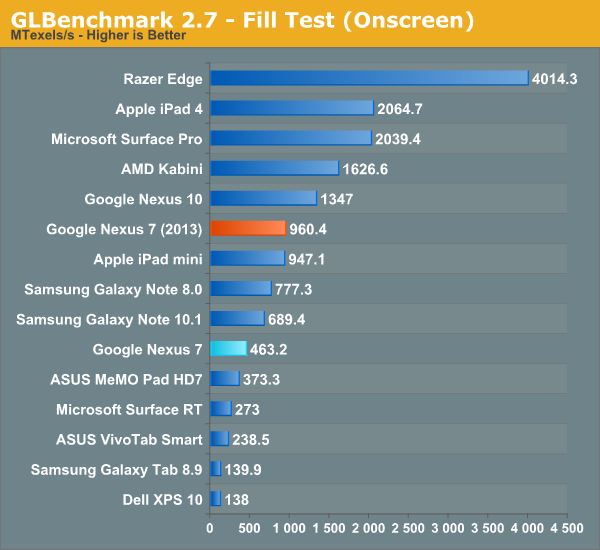
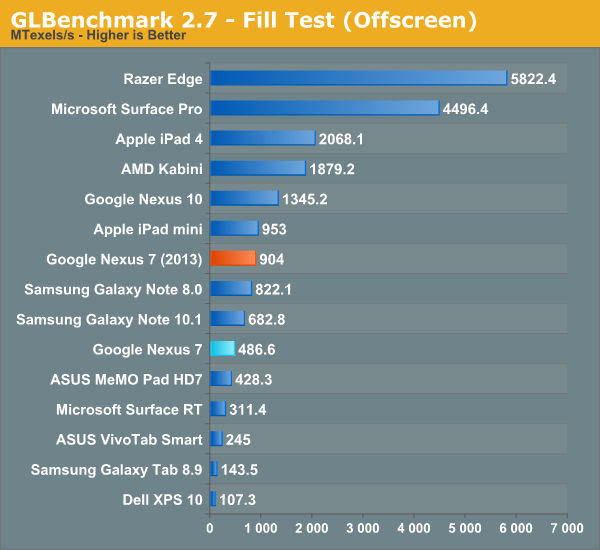
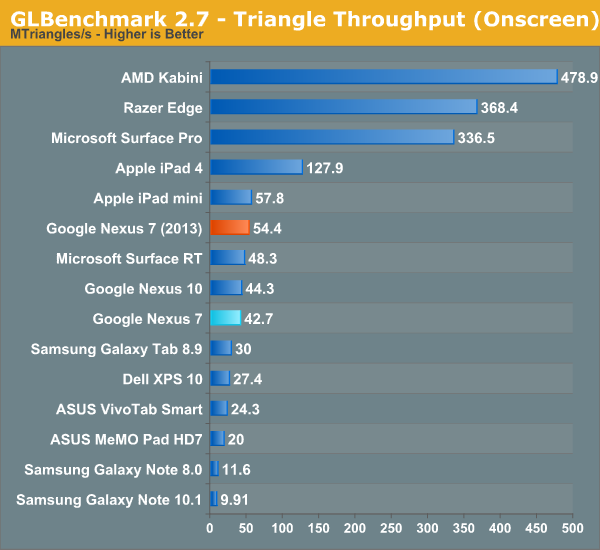
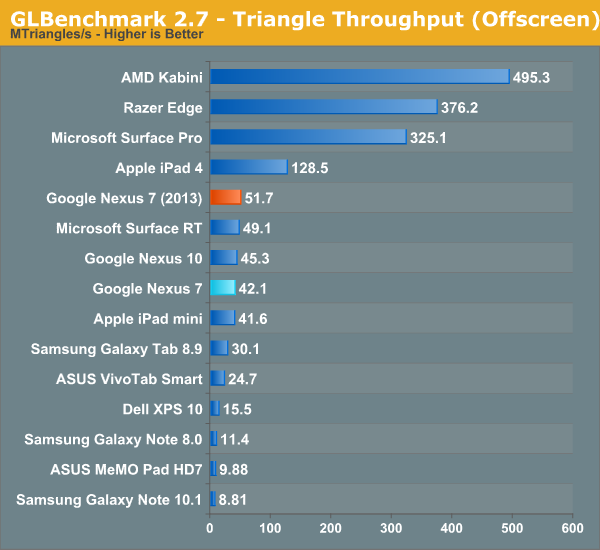
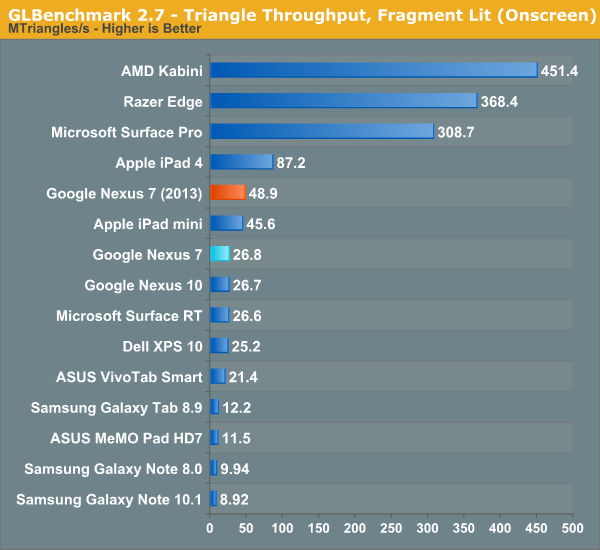
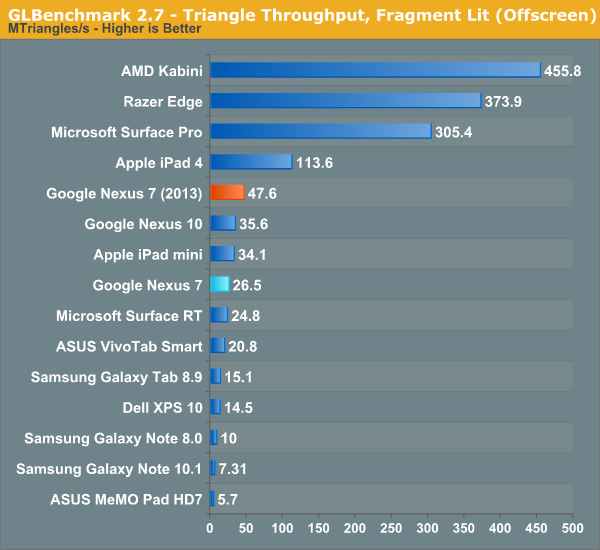
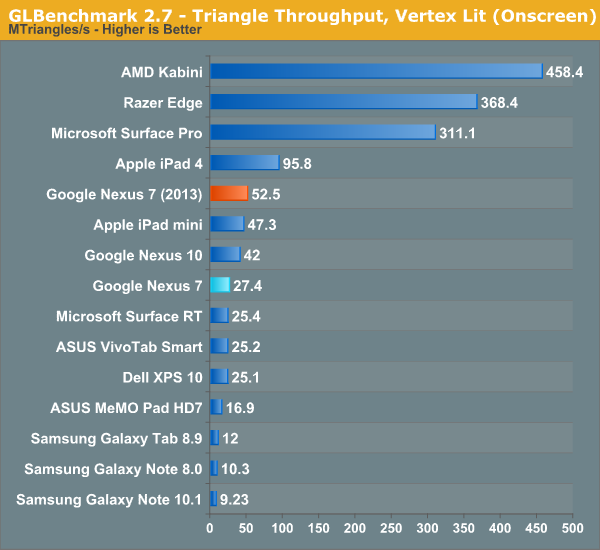
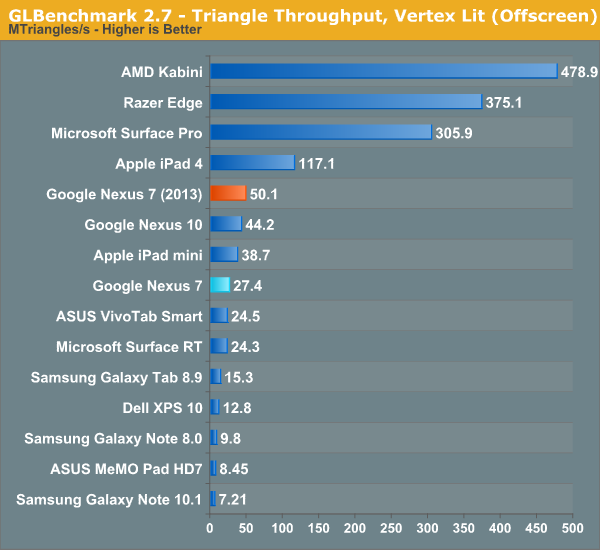

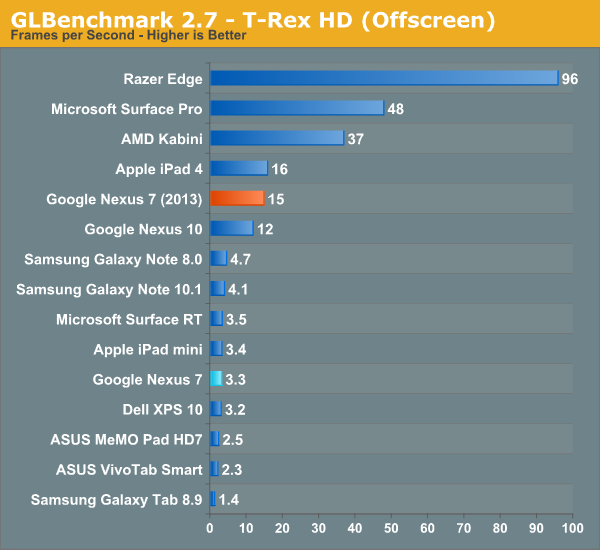
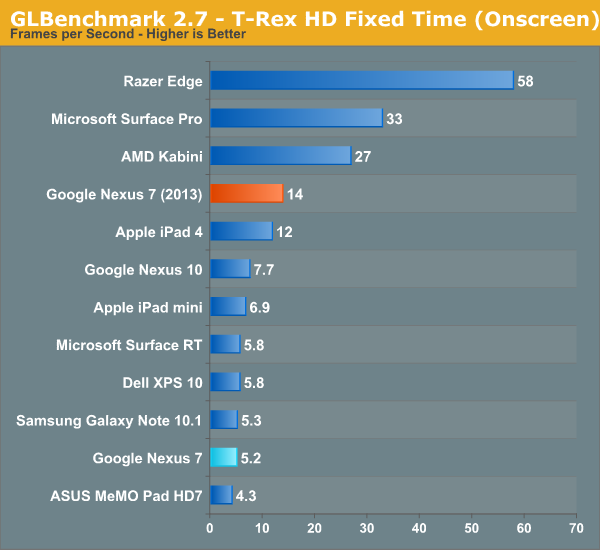
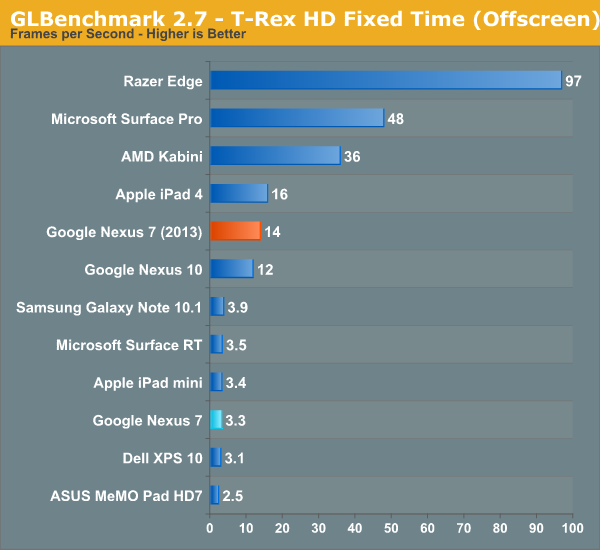
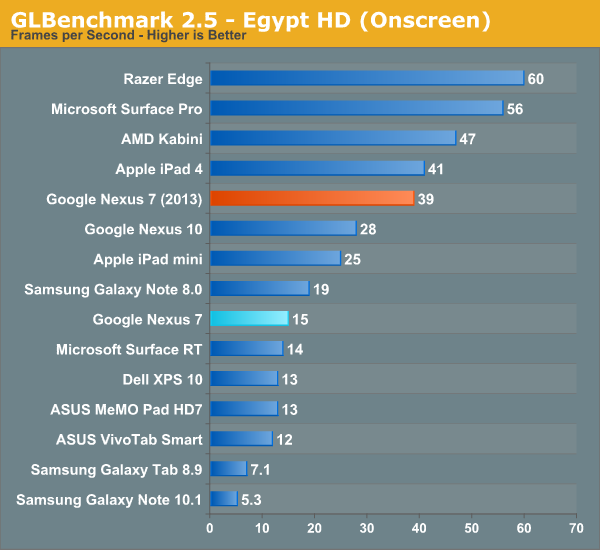
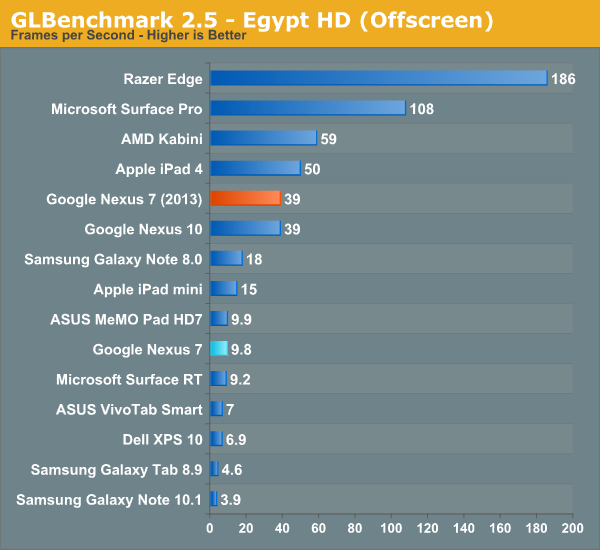
Suffice it to say, moving from 1.2–1.3 GHz Tegra 3 to 1.5 GHz APQ8064 represents a big jump forwards in performance. Google claimed 1.8x improvement on CPU performance, and 4x improvement on GPU, which gets validated pretty much consistently through the benchmarks. I never felt like Tegra 3 was a slouch by any means (performance was more I/O bound on the OG Nexus 7, which we’ll talk about in a moment), but the new Nexus 7 has ample performance for the considerable increase in screen resolution.
Dat eMMC
It wasn’t any secret with the original Nexus 7 that much of the real world performance was gated by storage I/O throughput – we wrote about it after all – and storage performance was a common complaint while multitasking on a few other previous and similar era ASUS tablets. Most of the time performance was acceptable, and for $200 you can’t complain too much about things, the issue was that further on in the life of the tablet performance began degrading somewhat notably, leading to complaints.
Obviously the first thing I did on the Nexus 7 (2013) was run Androbench with the same 100 MB settings to test and see what out of box I/O performance looks like. Things are much better with the new Nexus 7 than they were with the previous one, so at a high level all is good.
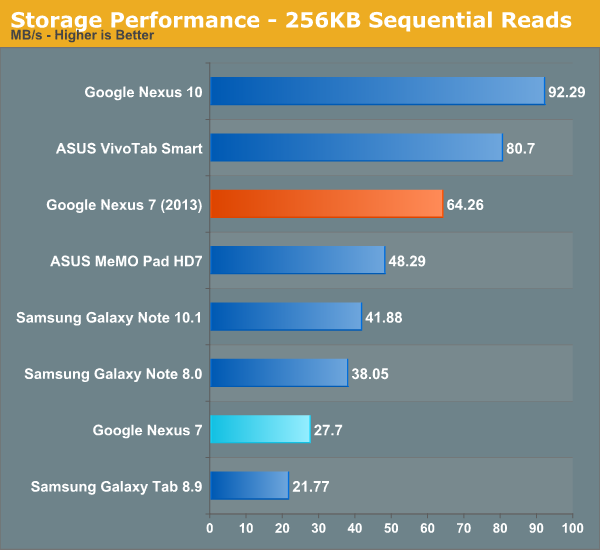
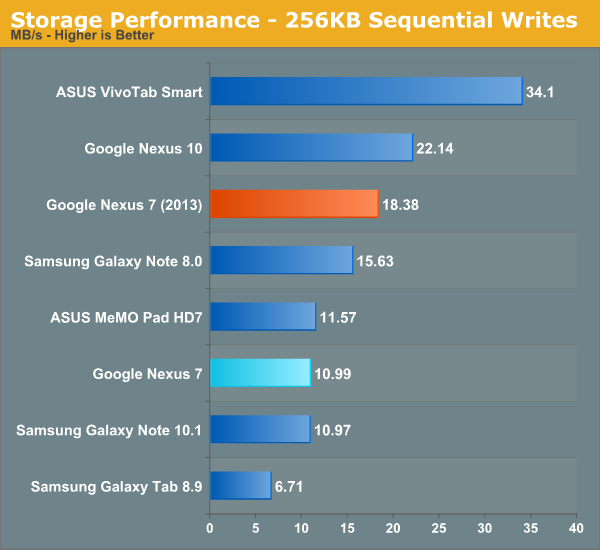
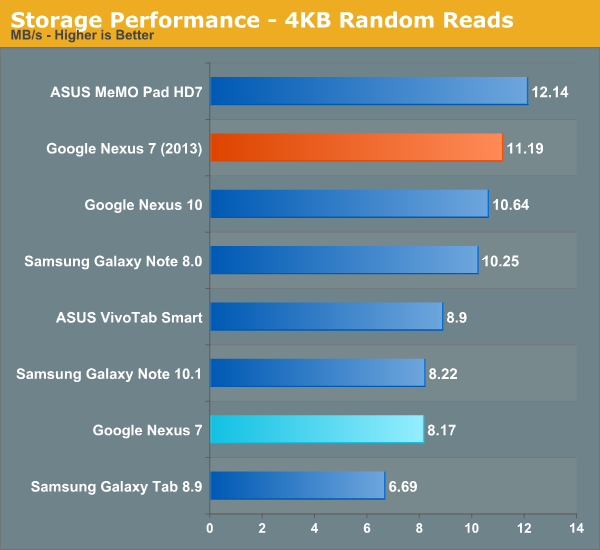

The story actually is a bit more involved however. One of the big problems was that the slowness which occurred with the prior Nexus 7 took device aging to appear – it was great for the first few months, but after you started loading it things tailed off. The new Nexus 7 (2013) with Android 4.3 includes support for fstrim, essentially idle garbage collection, which TRIMs the eMMC when a few conditions are met – the device is idle, screen off, and battery above roughly 70-percent. I’m told that TRIM support has been part of the eMMC standard since around version 4.2, it was just a matter of enabling it in software. The result is that the new Nexus 7 shouldn’t have these aging affects at all. Better yet, fstrim support has also been added to the old Nexus 7 with as of the Android 4.3 update, so if you’ve got a Nexus 7 that feels slow, I/O performance should get better after fstrim runs in the background. I'm checking on whether the other Nexus devices have also had TRIM support added. I would consider the slow storage aging problem fixed as of now, and Google took the eMMC and storage I/O performance issues with the previous Nexus 7 to heart for this version.


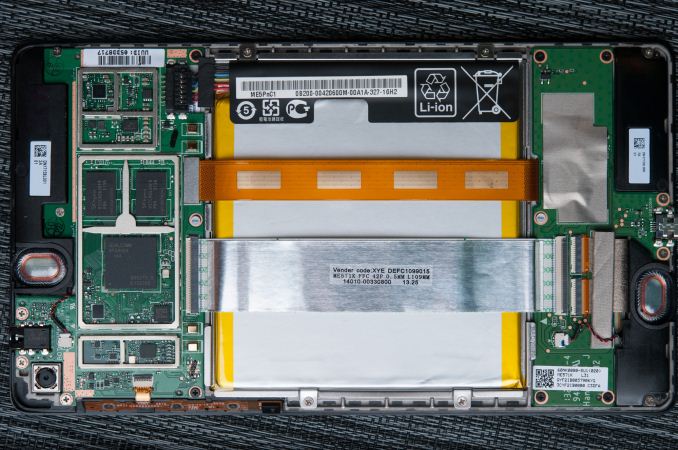
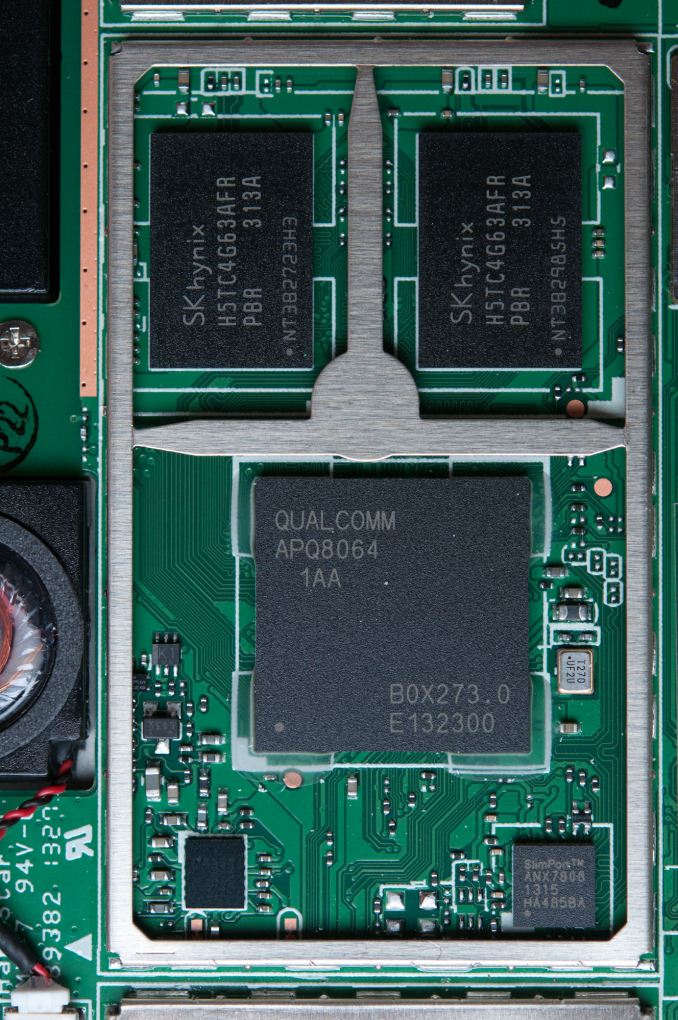














252 Comments
View All Comments
Sunburn74 - Saturday, July 27, 2013 - link
Actually wow I just learned there is a 30 dollar adapter that will convert the micro usb to a HDMI out! Amazing!Brian Klug - Saturday, July 27, 2013 - link
Yes, you can buy a USB SlimPort HDMI adapter and get HDMI output, same as the Nexus 4.-Brian
Impulses - Sunday, July 28, 2013 - link
Is there anything else out there that uses SlimPort? Not sure what advantage it has over MHL which was already on the way to being pretty common (and even convenient with the new style of cables split at the HDMI port, see Monoprice). I think you covered this in an old pipeline article (potential advantage/reason for Slimport) but I forget...Da W - Saturday, July 27, 2013 - link
Are you kidding?SOMEONE PLESE MAKE A 7" AMD KABINI WINDOWS TABLET!!!! I'M A BUYER!
Krysto - Saturday, July 27, 2013 - link
Doesn't Kabini have like an 18W TDP?TheinsanegamerN - Saturday, July 27, 2013 - link
yes, it does.Death666Angel - Saturday, July 27, 2013 - link
No, it doesn't. There are Kabini variants in the 9W/15W/25W TDP ranges. Too much for 7", but could be fitted in a 10.x" and definitely a 11.6" tablet/convertible.enealDC - Saturday, July 27, 2013 - link
As an owner of both a nexus 7 (gifted) and a transformer prime, i'm done with android tablets. beyond consuming content, i really don't have any use for them. Not to mention the fact that not a month goes by that I don't wish i waited when buying my Transformer Prime. Asus rewarded me as a customer by immediately (almost) planning a better version of the device they sold me. As such, i will reward them by not purchasing another Android Tablet again.Broo2 - Saturday, July 27, 2013 - link
you would prefer they not update their devices as technology improves? With that mentality, we would all still be running PalmOS phones with a 320x240 restive screen an EDGE network...It is likely Asus started planning the Prime in 2011 and the new Infinity screen fabrication and CPUs technology came along in mid 2012- while they were already starting to work on production of the Prime.
Never regret any decision you have made as you can never change what has already happened and it just causes stress and frustration. Instead of feeling a personal offense to Asus selling a new tablet, you could sell your Prime on eBay/Etsy and someone would likely be very happy to use it- and you can take the proceeds and put towards something else. :)
Broo2 - Saturday, July 27, 2013 - link
lol; edit -etsy = swappa